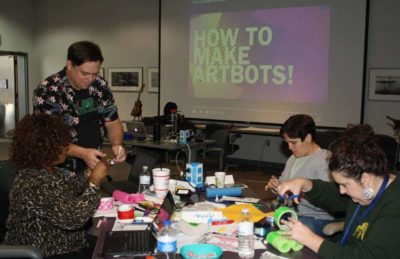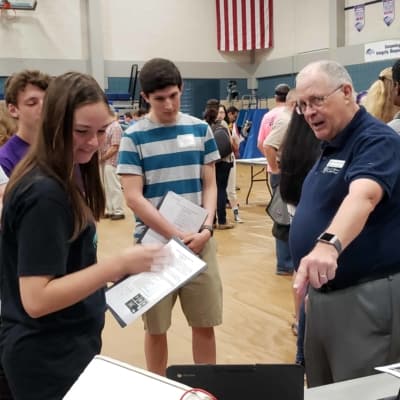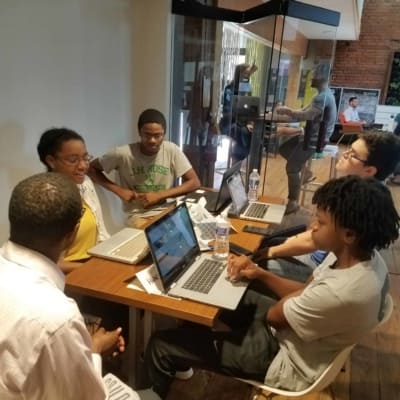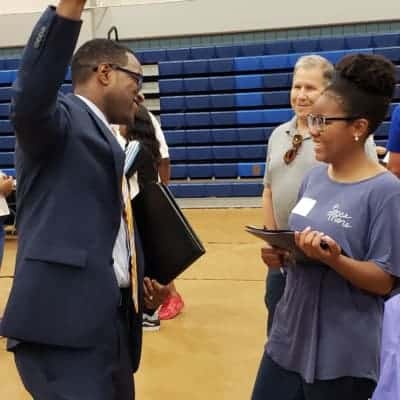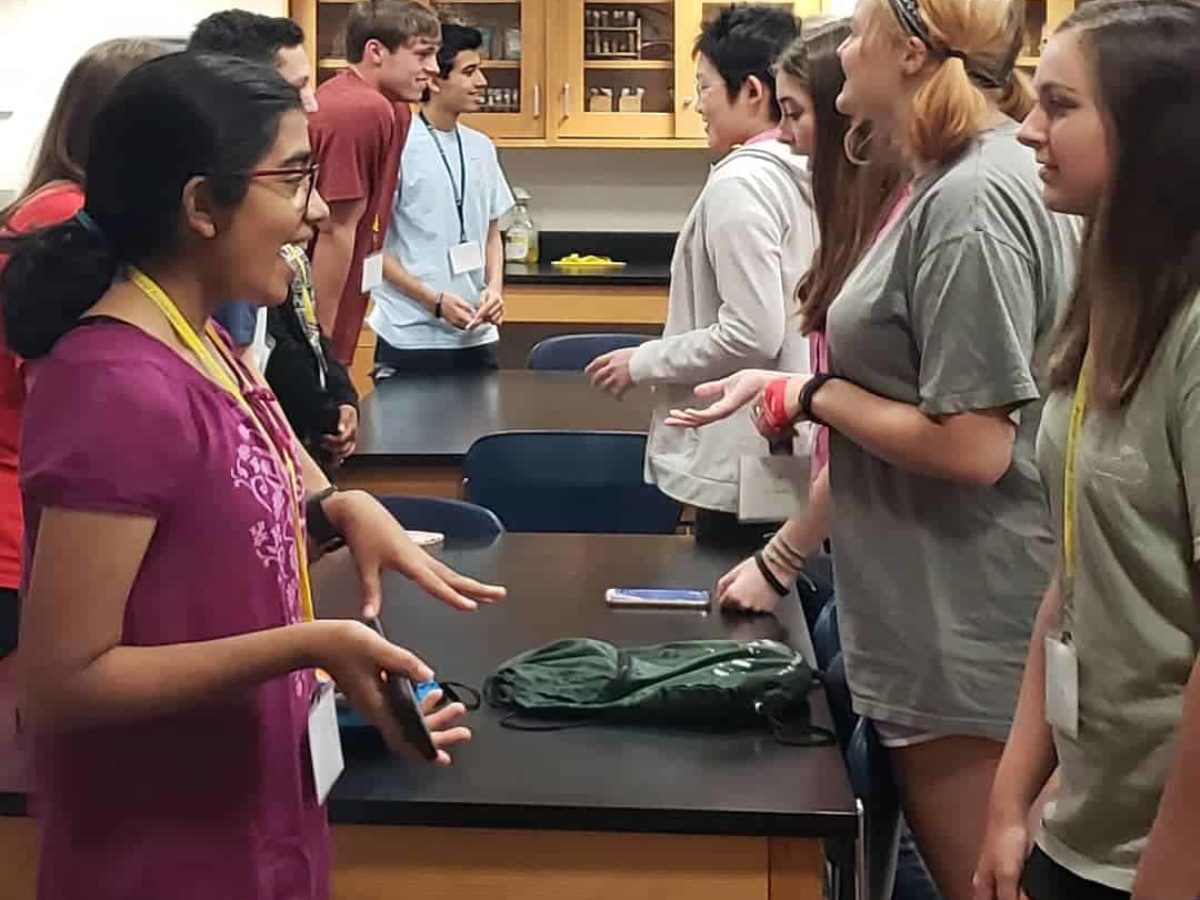
Our nation’s growing diversity is reflected in our school-age population. In 2014, for the first time ever, African American, Native American, Hispanic, and Asian children made up the majority of the approximate 50 million students in our nation’s public schools. In addition to an increase in racial and ethnic diversity, schools face issues related to other types of student diversity including socioeconomic status, languages spoken, ability, sexual orientation, and gender identity.
Teaching students with diverse backgrounds and needs creates many benefits and opportunities for students and educators. Research from the Civil Rights Project at UCLA found that racial and ethical diversity in the classroom enhances students’ communication, critical thinking, and problem solving skills, while classrooms with students of different socioeconomic backgrounds produce higher test scores for all student groups. Diverse classrooms promote creativity as those with differing viewpoints are able to collaborate to problem solve.
Promoting student growth and reflection, students exposed to diverse classrooms are entering job markets with lessening concern for community or national boundaries.
Diversity vs. divisiveness
On the flipside, with an increase in diversity comes a growing societal divide. Simply put, diversity implies difference — different wants, different needs, different goals. The more diverse we become, the more likely these differences will manifest themselves in ways that put people at odds with each other.
Incidents such as the 2017 Charlottesville, Virginia protests highlight the challenges that can result when growing diversity of culture, background, and experience is met with vitriol and violence. The need for civil discourse skills has become especially urgent as increasingly heated political rhetoric exposes the degree to which increased diversity is finding Americans polarized on a many number of important issues, often times resulting in acts of violence.
Promoting greater understanding and respect
Schools and classroom teachers have a crucial role to play in combating this divisiveness through the facilitation of meaningful dialogue among their diverse learners. Teaching students the art of civil discourse (a conversation in which there is a mutual airing of views without judgement or repercussions) and effective communication and listening skills can help them develop cognitive competence that will put them in a good position not only in school but will be something they can carry with them throughout life. No longer should these lessons be relegated to civics or humanities courses. These lessons can, and should, be occurring in all classrooms.
Reflecting on his own experience, Devan Desai, North Carolina School of Science and Mathematics (NCSSM) class of 2019 shares: “Through a civil discourse format in a discussion for my Molecular Genetics Course, I learned to understand and respect opposing perspectives. This enabled me to deepen my understanding of course content and develop better communication skills to strengthen my own argument.”
Rules of engagement: Model the behavior
Irregardless of the grade level or subject matter being taught, the basic rule for introducing civil discourse in a classroom is for one to model the behavior. Establishing one’s classroom as an environment of unconditional acceptance where all views and opinions are to be treated with respect and dignity sets an attitude required to facilitate civil dialogue. As a classroom teacher this means (1) remaining calm when people say things you dislike, and (2) accepting when students reach different conclusions on a controversial issue than you might have reached.
“Three times I have raised my right hand and sworn to support and defend the Constitution of the United States, against all enemies, foreign and domestic,” affirms Bob Gotwals, lieutenant commander (LCDR, USNR (Ret.)) and computational science and chemistry instructor at the North Carolina School of Science and Mathematics. “This means all of the Constitution, particularly those amendments protecting free speech, assembly, and the right to petition the government. This is in spite of the fact that there are many times where I completely disagree with others’ points of view.”
Clearly defined expectations
Teachers need to clearly define and maintain classroom expectations and boundaries. It is imperative that students understand and adhere to the expectations in order to provide a safe and support environment for healthy dialogue.
Discourse that is civil is:
• thoughtful listening for understanding;
• an understanding of one’s own perspectives and limitations;
• a focus on the issues rather than the individual(s) holding the views;
• an ability to interact constructively with a diverse group of people holding; competing views;
• a willingness to seek the sources of disagreements and points of common purpose;
• maintaining an open mind and a willingness to change their minds.
“It is absolutely critical in both of my courses — African American Studies and Race, Ethics, and Leadership — for students to engage in respectful and civil discourse around controversial issues,” said Dr. Jamie Lathan, humanities instructor and dean of distance education at the North Carolina School of Science and Mathematics.
“First of all, many of my students do not have a safe space in a traditional school setting to have these conversations. I ensure that my class is a safe space. Secondly, my students need to learn how to respectfully disagree with someone while being open to learning from their perspectives. With that in mind, I have assigned class discussions in which I have intentionally given students roles defending arguments of which they disagree. My goal in that assignment is to help students appreciate other perspectives by engaging in challenging conversations where they are tasked with defending those perspectives.”
Value the process
Civil discourse is not a debate, where the goal is to construct a winning argument or where the class reaches a particular conclusion about a certain topic. It is a process of skill building, where the goal is to practice the art of presenting a variety of different views while behaving respectfully toward one another.
When individuals feel attacked, they often stop listening. A successful dialogue isn’t one where opinions are altered, but one in which participants consider new perspectives and realize that many issues are multifaceted and more complex than simply having a right or wrong side.
“In my classes, I have encountered the most growth through conversations regarding a topic in which I, nor the other student(s), could define a singular correct answer. The most rewarding conclusions stem from the creation and development of an intricate concept shared by many people with different perspectives,” said Evan McMahan, a NCSSM online student in the class of 2020.
Preparing better citizens
As diversity becomes more prevalent across the nation and in our classrooms, it is imperative that we prepare the next generation of citizens to embrace diversity and handle it in a socially responsible and mature way. Suspending judgement and engaging in honest and intentional dialogue with the goal of listening to understand should be the gold standard — for our students, our classrooms, and our communities.
Recommended reading

